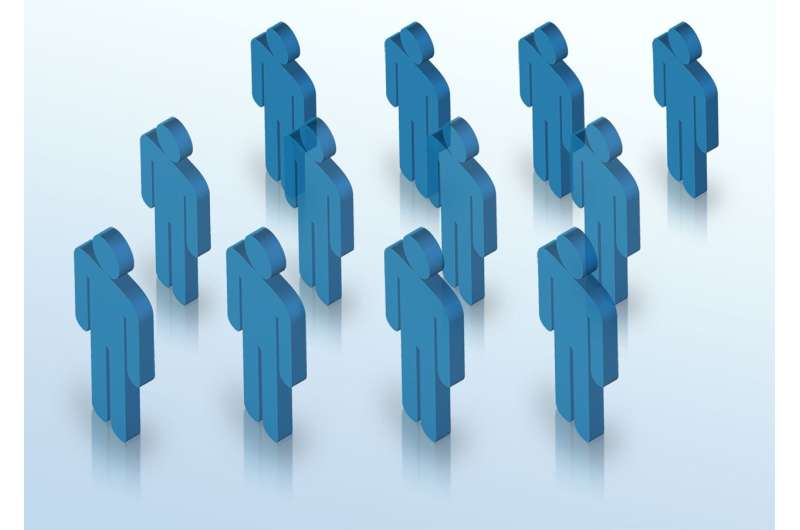This article has been reviewed according to Science X's editorial process and policies. Editors have highlighted the following attributes while ensuring the content's credibility:
fact-checked
trusted source
proofread
Power of the pictogram: Researcher finds that sorted graphics make consumers feel optimistic

Sometimes, how the information is presented is as important as the information itself. Graphics, icons, and pictograms are increasingly popular methods of presenting information to consumers in direct, memorable, and easily understandable ways.
A team of researchers led by Rensselaer Polytechnic Institute's Gaurav Jain, Ph.D., assistant professor of marketing in the Lally School of Management, found that pictograms sometimes have an additional benefit: inducing optimism.
In research recently published in the Journal of Marketing Communications, Jain and his colleagues found that frequency pictograms, which convey proportions and probabilities, induce optimism in consumers when they are presented in a sorted way. In other words, if the same icons are grouped together in the pictogram, a consumer will feel more favorably and exhibit an optimism bias about their own chances.
The findings contribute to the field of attribute framing, which refers to highlighting characteristics in a positive or negative light. For example, a consumer may be more inclined to purchase an item marked as $10 off of $30 rather than one marked as $20. Previous research has focused on textual rather than pictorial attribute framing. Since frequency pictograms are "the most common graphical representations of quantitative information," Jain's research has potentially wide applications.
"Our work may immediately be applied in marketing and public policy," says Jain. "Sorted verses unsorted pictograms should be used strategically, depending on whether the messaging is promotional or prohibitive. If eight out of 10 dentists endorse a toothpaste, for example, a sorted pictogram would make consumers feel favorably about the toothpaste. However, when depicting that 8% of children alive today will die if current smoking trends continue, an unsorted pictogram would be appropriate."
"Dr. Jain's research provides valuable insights for communicators," said Chanaka Edirisinghe, Ph.D., acting dean of Rensselaer's Lally School of Management. "It also opens the door to explore further possibilities. How does more than two categories represented in the pictogram affect the findings? What role does the number of icons, their size, or using multiple colors within one icon to show fractional proportions play? With this research, Dr. Jain adds to our understanding of people's perceptions according to how information is presented."
More information: Gaurav Jain et al, How pictogram arrangements impact consumer optimism and judgments, Journal of Marketing Communications (2023). DOI: 10.1080/13527266.2023.2253820
Provided by Rensselaer Polytechnic Institute




















